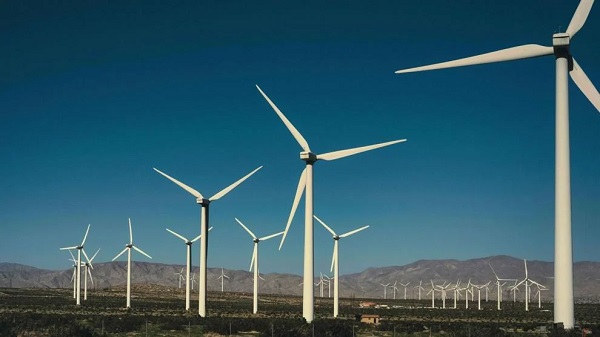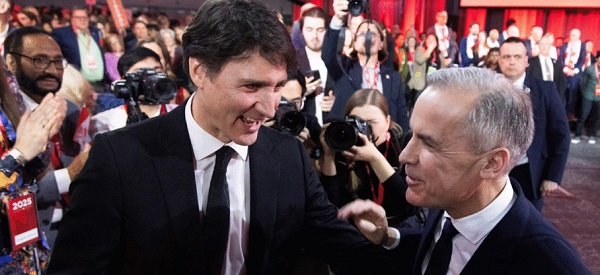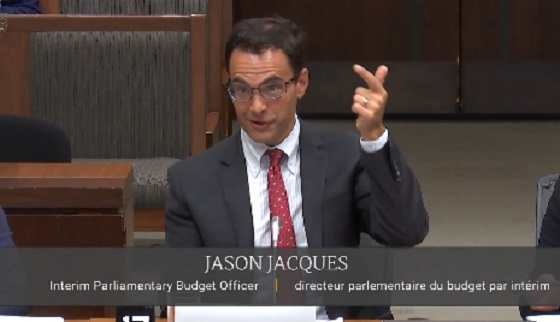Business
Overregulation is choking Canadian businesses, says the MEI

 From the Montreal Economic Institute
From the Montreal Economic Institute
The federal government’s growing regulatory burden on businesses is holding Canada back and must be urgently reviewed, argues a new publication from the MEI released this morning.
“Regulation creep is a real thing, and Ottawa has been fuelling it for decades,” says Krystle Wittevrongel, director of research at the MEI and coauthor of the Viewpoint. “Regulations are passed but rarely reviewed, making it burdensome to run a business, or even too costly to get started.”
Between 2006 and 2021, the number of federal regulatory requirements in Canada rose by 37 per cent, from 234,200 to 320,900. This is estimated to have reduced real GDP growth by 1.7 percentage points, employment growth by 1.3 percentage points, and labour productivity by 0.4 percentage points, according to recent Statistics Canada data.
Small businesses are disproportionately impacted by the proliferation of new regulations.
In 2024, firms with fewer than five employees pay over $10,200 per employee in regulatory and red tape compliance costs, compared to roughly $1,400 per employee for businesses with 100 or more employees, according to data from the Canadian Federation of Independent Business.
Overall, Canadian businesses spend 768 million hours a year on compliance, which is equivalent to almost 394,000 full-time jobs. The costs to the economy in 2024 alone were over $51.5 billion.
It is hardly surprising in this context that entrepreneurship in Canada is on the decline. In the year 2000, 3 out of every 1,000 Canadians started a business. By 2022, that rate had fallen to just 1.3, representing a nearly 57 per cent drop since 2000.
The impact of regulation in particular is real: had Ottawa maintained the number of regulations at 2006 levels, Canada would have seen about 10 per cent more business start-ups in 2021, according to Statistics Canada.
The MEI researcher proposes a practical way to reevaluate the necessity of these regulations, applying a model based on the Chrétien government’s 1995 Program Review.
In the 1990s, the federal government launched a review process aimed at reducing federal spending. Over the course of two years, it successfully eliminated $12 billion in federal spending, a reduction of 9.7 per cent, and restored fiscal balance.
A similar approach applied to regulations could help identify rules that are outdated, duplicative, or unjustified.
The publication outlines six key questions to evaluate existing or proposed regulations:
- What is the purpose of the regulation?
- Does it serve the public interest?
- What is the role of the federal government and is its intervention necessary?
- What is the expected economic cost of the regulation?
- Is there a less costly or intrusive way to solve the problem the regulation seeks to address?
- Is there a net benefit?
According to OECD projections, Canada is expected to experience the lowest GDP per capita growth among advanced economies through 2060.
“Canada has just lived through a decade marked by weak growth, stagnant wages, and declining prosperity,” says Ms. Wittevrongel. “If policymakers are serious about reversing this trend, they must start by asking whether existing regulations are doing more harm than good.”
The MEI Viewpoint is available here.
* * *
The MEI is an independent public policy think tank with offices in Montreal, Ottawa, and Calgary. Through its publications, media appearances, and advisory services to policymakers, the MEI stimulates public policy debate and reforms based on sound economics and entrepreneurship.
Business
Department of Energy returning $13B climate agenda funding to taxpayers

From The Center Square
By
The U.S. Department of Energy will be returning to American taxpayers $13 billion in “unobligated wasteful spending” that was originally intended for former President Joe Biden’s climate agenda.
In response, Larry Behrens from Power the Future told The Center Square that “by returning $13 billion, the Department of Energy under President Trump is showing respect for taxpayers and a willingness to end funding for programs that don’t work.”
Power the Future is a nonprofit dedicated to Americans who work in reliable energy sources.
Behrens told The Center Square that the Department of Energy’s action “is a welcome step toward restoring accountability and letting free markets – not bureaucrats – determine our energy future.”
“The American people made it crystal clear at the ballot box that they don’t want another taxpayer dollar wastefully spent on green scam pet projects,” Behrens said.
Diana Furchtgott-Roth of the Heritage Foundation told The Center Square that with the return of $13 billion, “the deficit will be lower than otherwise.”
When asked what other actions the Department of Energy should take to end wasteful spending, Furchtgott-Roth said that “the Department should comb through its budget and see what projects can be accomplished by the private sector, then end those projects.”
“The Department should also look through its regulations and see which ones impose costs on businesses and families,” Furchtgott-Roth said.
“For instance, the Department should eliminate appliance regulations that prevent companies from producing the gas stoves, boilers, or water heaters that people want to buy,” Furchtgott Roth said.
The Department of Energy announced Wednesday its “intention to return more than $13 billion in unobligated funds initially appropriated to advance the previous Administration’s wasteful Green New Scam agenda.”
The department said its announcement reflects “the [Trump] Administration’s commitment to halt wasteful spending and refocus the department to its core mission.”
For instance, Trump signed the Working Families Tax Cut into law earlier this year, the release said, which “directed the Energy Department to rein in bloated federal spending and expedite the return of unobligated funds to the U.S. Treasury to support hardworking Americans.
“The Department of Energy is working to advance its critical mission of unleashing affordable, reliable and secure energy for all Americans while increasing efficiency and promoting better stewardship of taxpayer dollars,” the release said.
The Department of Energy has not yet responded to The Center Square’s request for comment.
U.S. Secretary of Energy Chris Wright said in the news release: “The American people elected President Trump largely because of the last administration’s reckless spending on climate policies that fed inflation and failed to provide any real benefit to the American people.”
“Thanks to President Trump and Congress, those days are over,” Wright said.
Renewable energy group American Council on Renewable Energy has not yet responded to The Center Square’s two requests for comment.
Behrens told The Center Square, “keep in mind it was Biden’s DOE that funneled billions to an electric vehicle charging program that failed to deliver results.”
“Over $6 billion in EV charging funding has now been flagged as wasteful,” Behrens said.
Behrens also referred The Center Square to a White House document entitled “Ending the Green New Scam.”
Furchtgott-Roth informed The Center Square that “in general, states with the most expensive electricity require renewables (with the exception of Alaska), and states with the least expensive electricity do not require renewables.”
“States should prioritize affordable, resilient, reliable energy,” Furchtgott-Roth said.
“This means getting rid of requirements that a share of electricity be produced with renewables,” Furchtgott-Rott said.
Business
Canada Is Still Paying The Price For Trudeau’s Fiscal Delusions

From the Frontier Centre for Public Policy
By Lee Harding
Trudeau’s reckless spending has left Canadians with record debt, poorer services and no path back to a balanced budget.
It’s time for Canada to break free from Trudeau’s big-spending legacy. With soaring deficits, mounting debt, and stalled growth, we need a budget that cuts red tape, flattens taxes, and puts the economy first.
Justin Trudeau may be gone, but the economic consequences of his fiscal approach, chronic deficits, rising debt costs and stagnating growth, are still weighing heavily on Canada.
Before becoming prime minister, Justin Trudeau famously said, “The budget will balance itself.” He argued that if expenditures stayed the same, economic growth would drive higher tax revenues and eventually outpace spending. Voila–balance!
But while the theory may have been sound, Trudeau had no real intention of pursuing a balanced budget. In 2015, he campaigned on intentionally overspending and borrowing to build infrastructure, arguing that low interest rates made it the right time to run deficits.
This argument, weak in its concept, proved even more flawed in practice. Post-pandemic deficits have been horrendous, far exceeding the modest overspending initially promised. The budgetary deficit was $327.7 billion in 2020–21, $90.3 billion the year following, and between $35.3 billion and $61.9 billion in the years since.
Those formerly historically low interest rates are also gone now, partly because the federal government has spent so much. The original excuse for deficits has vanished, but the red ink and Canada’s infrastructure deficit remain.
For two decades, interest payments on federal debt steadily declined, falling from 24.6 per cent of government revenues in 1999–2000 to just 5.9 per cent in 2021–22, thanks largely to falling interest rates and prior fiscal restraint. But that trend has reversed. By 2023–24, payments surged past 10 per cent for the first time in over a decade, as rising interest rates collided with record federal debt built up under Trudeau.
Rising debt costs are only part of the story. Federal revenues aren’t what they could have been because Canada’s economy has stagnated. Population growth pads our overall GDP growth stats, but masks our productivity problem. From 2014 to 2022, Canada had near-lowest GDP growth among 30 countries in the Organization for Economic Co-operation and Development. Canada’s average growth rate during that period (0.6 per cent) was only ahead of Luxembourg (0.5 per cent) and Mexico (0.4 per cent).Why should a country like Canada, so blessed with natural resources and know-how, do so poorly? Capital investment has fled because our government has made onerous regulations, especially hindering our energy industry. In theory, there’s now a remedy. Thanks to new legislation, the Carney government can extend its magic sceptre to those who align with its agenda to fast-track major projects and bypass the labyrinth it created. But unless you’re onside, the red tape still strangles you.
But as the private sector withers under red tape, Ottawa’s civil service keeps ballooning. Some trimming has begun, rattling public sector unions. Still, Canada will be left with at least five times as many federal tax employees per capita as the U.S.
Canada also needs to ease its hell-bent pursuit of net-zero carbon emissions. Hydrocarbons still power the Canadian economy, from vehicles to home heating, and aren’t practically replaceable. Canada has already demonstrated that pursuing net-zero targets can result in near-zero per capita growth. Despite high immigration, the OECD projects Canada to have the lowest overall GDP growth from 2030 to 2060.
The Nov. 4 release of the federal budget is better late than never. So would be a plan to grow the economy, slash red tape and eliminate the deficit. But we’re unlikely to get one.
Lee Harding is a research fellow with the Frontier Centre for Public Policy.
-

 armed forces1 day ago
armed forces1 day agoSecretive Lockheed Martin Skunk Works reveals latest high-tech military drone
-

 International24 hours ago
International24 hours agoEverything has changed. Again.
-

 Business2 days ago
Business2 days agoGun Buyback Program creating criminals out of law abiding citizens and directing police away from actual crime
-

 Opinion1 day ago
Opinion1 day agoThe City of Red Deer’s financial mess – KPMG report outlines failure of council to control spending
-

 Business23 hours ago
Business23 hours ago“If you don’t change, this is dying.” PBO warns Carney’s massive deficits are an extinction level threat
-

 Energy2 days ago
Energy2 days agoHere’s a list of ways the Carney government can unshackle Canada’s energy sector
-

 Business1 day ago
Business1 day agoTrump approves deal for majority-American control of controversial app TikTok
-

 Daily Caller1 day ago
Daily Caller1 day agoFBI Deployed Nearly 300 Agents On Jan 6 As ‘Pawns In A Political War’





